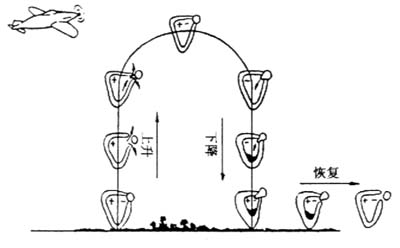| disease | Sinus Barotrauma |
| alias | Aerosinusitis |
This condition is caused by the inability of the negative pressure in the sinuses to promptly balance with the external atmospheric pressure during rapid changes, leading to sinus mucosal injury and inflammation. It commonly affects the frontal and maxillary sinuses. Pilots and divers are particularly susceptible to this disease.
bubble_chart Pathogenesis
In normal individuals, the sinus openings remain patent, allowing the sinus cavity pressure to rapidly equilibrate with external pressure changes without causing barotrauma.
If there are obstructive factors at the sinus openings (such as nasal polyps, mucosal edema, or nasal polypoid degeneration) or a high septal deviation accompanied by rhinitis, when the aircraft ascends and external pressure decreases, air in the sinuses may still barely escape. However, when the aircraft rapidly descends and external pressure suddenly increases, the diseased tissue is pressed against the sinus opening, forming a valve-like obstruction. This disrupts the pressure balance between the sinus and external environment, creating an increasingly negative pressure within the sinus. This leads to dilation of nasal mucosal blood vessels, serum exudation, diffuse mucosal edema, and even submucosal dissection and hemorrhage (Figure 1). If purulent secretions are aspirated into the sinus, acute suppurative sinusitis may also develop secondarily.

Figure 1: Pathogenesis of barotraumatic sinusitis.
bubble_chart Clinical Manifestations
1. Pain: Rapidly changes from a local sense of distension to dull pain, which may be located in the forehead, infraorbital region, inner canthus, etc. The surface may exhibit toothache, and it can also cause eyeball distending pain or the aforementioned toothache.
2. Bloody nasal discharge: After severe pain subsides, increased nasal secretions and blood-stained discharge appear. Examination often reveals the source to be the middle meatus.3. X-ray or CT scan: Shows thickening of the sinus mucosa, turbidity in the sinus cavity, and sometimes a fluid level. In cases of submucosal hematoma, a semicircular shadow may be visible.
4. Secondary infection: Some cases present with symptoms of acute sinusitis such as fever, stuffy nose, and purulent discharge, persisting for several weeks.
bubble_chart Treatment Measures
1. Strengthen health check-ups and hygiene supervision. Flying or diving is prohibited during the {|###|}attack stage of rhinitis{|###|}. Actively treat diseases that hinder sinus drainage, such as deviated nasal septum or {|###|}nasal polyp{|###|}.
2. In case of onset, quickly return to the original altitude, use 2–3% {|###|}Ephedra{|###|} nasal drops, and then fly at low speed.
3. Use analgesics, hot compresses, and vasoconstrictor drops to alleviate symptoms.
4. If sinus pain persists without improvement, enter a pressure chamber when possible, first pressurizing and then depressurizing. If still ineffective, puncture the maxillary or frontal sinus to allow air or vasoconstrictors to enter the sinus.
5. Use antibiotics to prevent or treat secondary infections.





